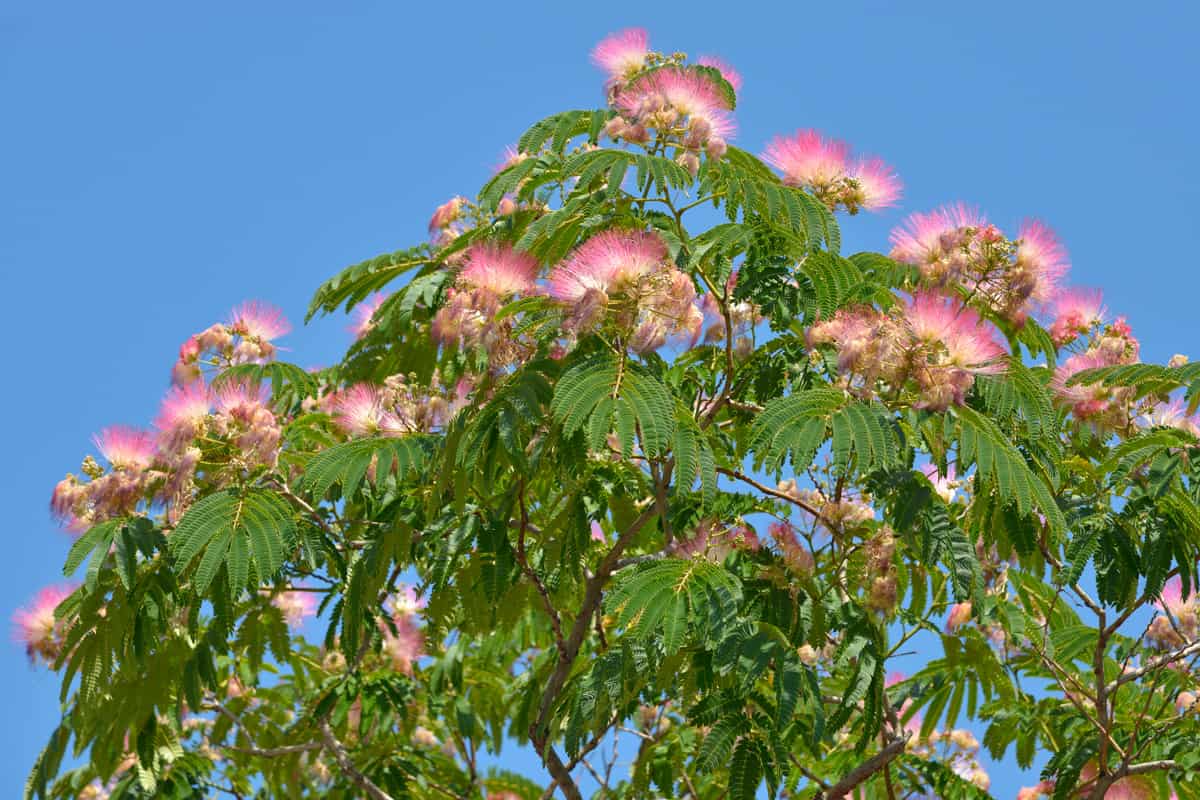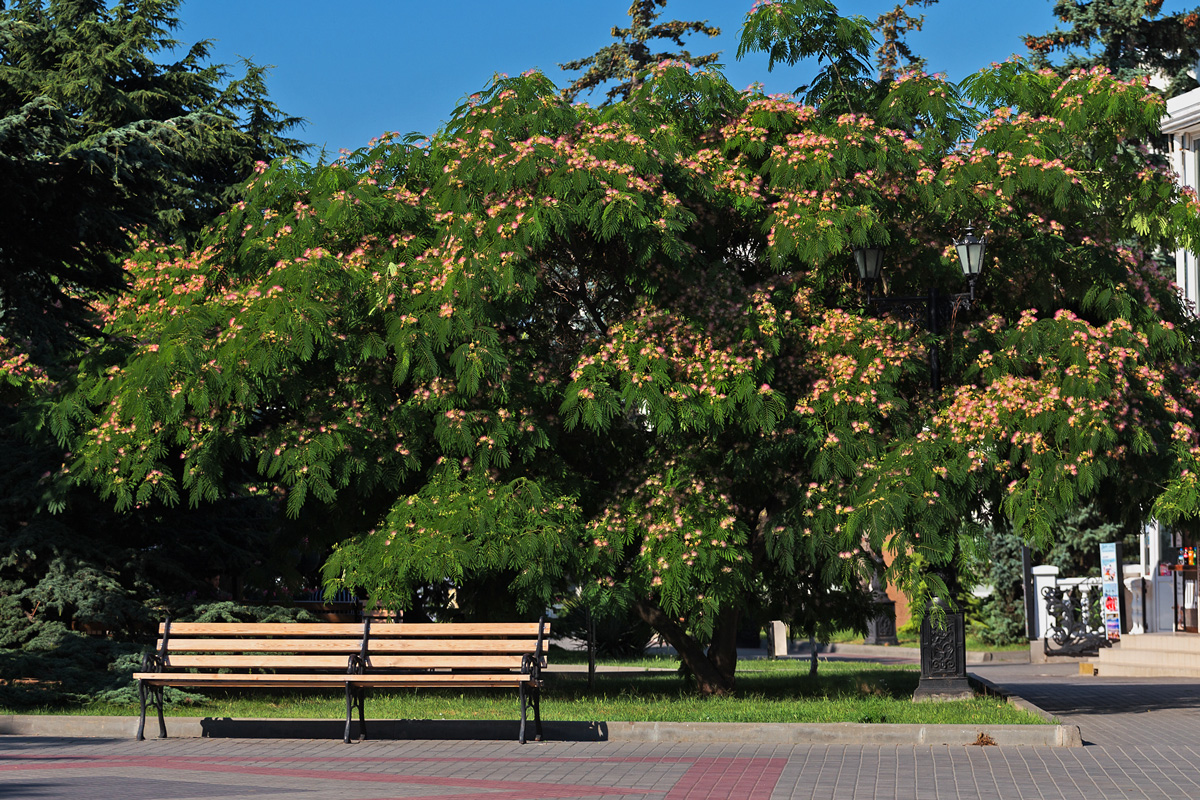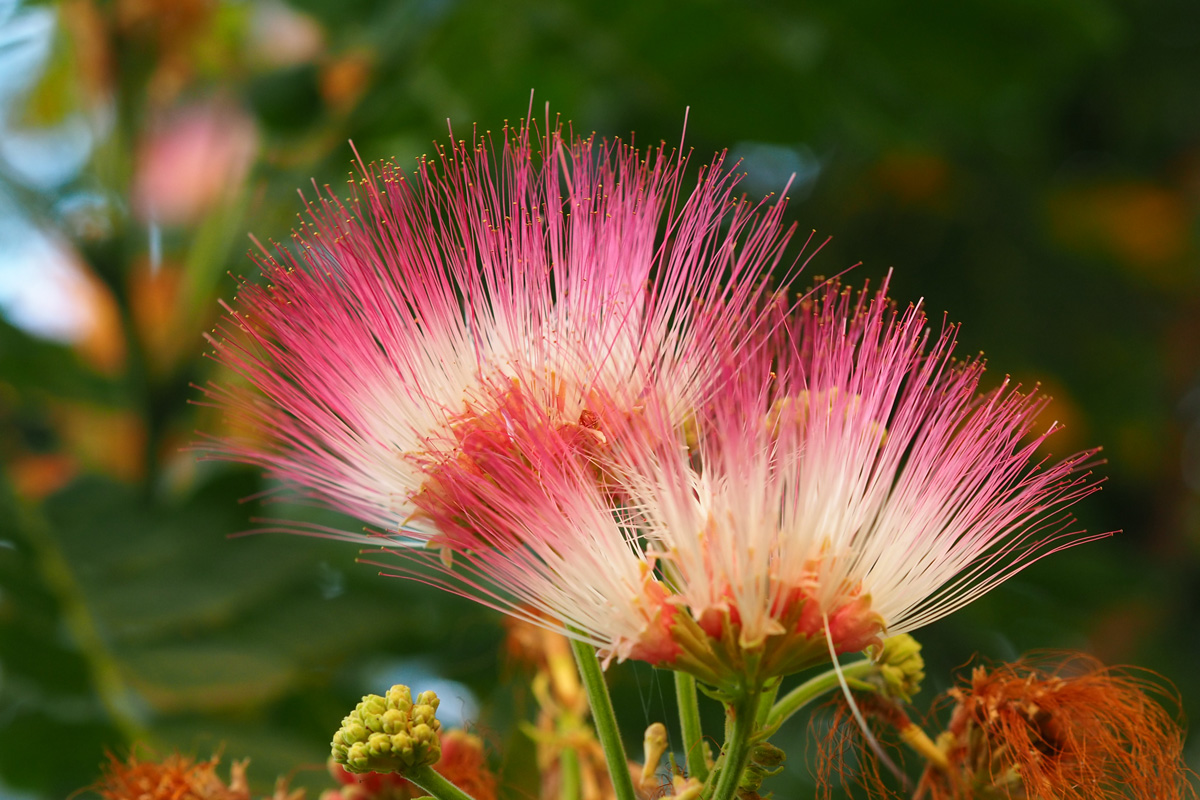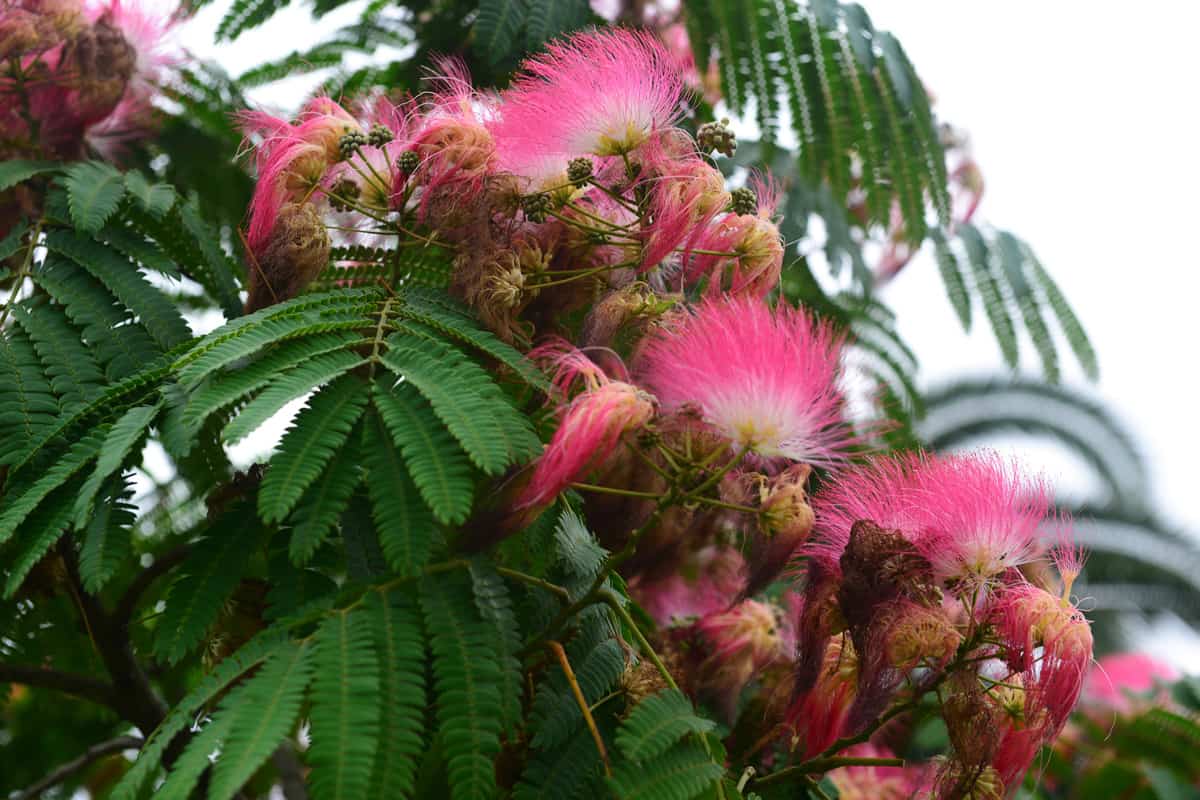The mimosa tree, also known as Albizia julibrissin, is a fragrant ornamental tree with beautiful pink blooms. The tree grows quickly and can reach a height that will provide shade for your yard. However, you might want to keep the tree small, so it can be easier to care for. How do you keep a mimosa tree small? We've researched this topic and are here to share the answers.
The best way to keep your mimosa tree small is by pruning it. Pruning regulates the size of a tree and gets rid of dead branches and decaying areas. It ensures that you have a healthy, well-structured tree.
This article will cover how to keep a mimosa tree small, how to maintain it, and more. Continue reading to learn what to expect when planting a mimosa tree in your yard.
How To Keep A Mimosa Tree Small
You may want to keep your mimosa tree small so for easy maintenance. One of the best ways to keep the height of a tree under control is by pruning it.
Pruning is best done when a tree is young. A young tree is more manageable and easier to prune than a mature tree. Many benefits come from pruning, and here are some of them:
- Manageable size
- Gets rid of decaying or damaged parts
- Keeps tree healthy and well-structured
- Creates a clean, attractive look
- Encourages bloom production
- Restrains rapid growth
Mimosa trees grow vigorously and are considered invasive, which is why pruning is essential. Here are some tips on how to effectively prune your mimosa tree:
Prune in spring
Pruning is best done after blooming takes place in the tree. This will ensure bountiful blooms that you can enjoy for a longer period.
Clean off suckers
Suckers are fast-growing, miniature, tree-like stems. They may be the tree's attempt to grow more branches and can be a sign of a tree in distress. You will want to use a pruner or billhook saw to remove them and give your tree a clean, tidy appearance.
Get rid of damaged parts
Broken branches should be pruned right away. This will prevent your tree from disease. Broken, decaying branches are unsightly and can further damage or weaken your tree.
How To Prune A Mimosa Tree

Pruning a tree can be quite daunting, but it is the best method for keeping it in shape. You can maintain your tree at a desired size if you prune the largest upright branches. Here is an easy step-by-step guide for pruning your mimosa tree.
Tools to prepare:
- Gardening gloves
- Pruning shears
- Pole pruner
- Pruning saw
- Ladder
Step 1
Put on your gloves and inspect your tree, starting at the bottom. Get rid of low-growing, unwanted branches with the use of pruning shears. Start by cutting just above the collar.
Click here to see these gardening gloves on Amazon.
Avoid cutting straight as much as possible. It can damage the collar and may also inflict damage on your tree. For larger branches, use a pruning saw.
Click here to see this pruning saw on Amazon.
Step 2
For any branches that are too high to reach, use a pole pruner. This will make cutting the branches out of your reach much easier. You can use a ladder to access particularly high branches.
Click here to see this pruner on Amazon.
Step 3
Visualize the size and shape that you want your tree to be. Cut thin limbs approximately three to five inches until the canopy resembles an umbrella.
Step 4
Once you're satisfied, clean all your tools to prevent the spread of any unwanted disease or infection to your other plants.
For a more detailed guide on how to properly prune your tree, check out this video:
Maintaining And Caring For Your Mimosa Tree
Sun
The mimosa tree requires full sun for at least six hours a day and will tolerate some partial afternoon shade.
Soil
When it comes to soil, the mimosa tree prefers slightly acidic, well-draining soil, just like most plants. The tree is also drought tolerant but needs some moisture to stay hydrated.
Water
As we said before, the mimosa tree is drought tolerant. Excess moisture can result in root decay. Giving the tree at least an inch of water once a week will suffice.
Fertilizer
The mimosa tree does not necessarily need any fertilizing. Still, if you want your tree to thrive and be in its best condition, it will need primary nutrients known as NPK or nitrogen, phosphorus, and potassium. Fertilizer with an NPK ratio of 10-10-10 should be applied once a month during the growing season.
Location
Choosing the right location is important as the mimosa tree has a wide canopy. You should avoid planting the tree near your home or in places with a lot of electrical wiring, as the tree can cause damage. The tree may also have weak branches, so it is not ideal for planting near roads and houses.
You should plant the tree in an open space because it's invasive. It thrives in humid climates and zones 6-9.
Pests and Diseases
A variety of pests and diseases can damage your tree. Some of these are webworms, which can cause damage to your tree's foliage. Spider mites can cause infestation and give a dull look to foliage.
Your mimosa may wilt. This is caused by fungi that affect the roots first and spread, which can cause the tree to wilt and eventually die. This is fatal, and the tree should be removed and burned to prevent the fungi from spreading to other plants.
Can You Grow Mimosa Tree In Pots?

It is possible to grow mimosa trees in pots. The Summer Chocolate mimosa variant grows especially well in pots. The trees can grow to be 15 to 20 feet tall and require large containers for cultivation.
How Long Do Mimosa Trees Bloom?

The mimosa tree's pink pom-pom-like flowers bloom in late spring to early summer. They will bloom for about two weeks and are followed by seed pods, which are toxic to humans and animals.
How Big Can A Mimosa Tree Get?

A mimosa tree can reach a height of 20 to 30 feet. It typically grows in USDA zones 6-9. The tree's canopy can achieve a width of 20 to 50 feet.
What Is The Lifespan Of A Mimosa Tree?

The lifespan of a mimosa tree is relatively short. The tree may last 15 to 20 years. Furthermore, the mimosa tree is susceptible to wilt and soil-borne fungus and will need to be removed within 25 years of planting.
In Closing
The mimosa tree is low-maintenance and can add shade to your yard with its wide canopy. It is drought-tolerant and can grow in a pot if you want to keep it indoors.
You may want to keep the tree's height in check for easy maintenance. Larger trees can be messy and shed leaves on your lawn. The mimosa tree is lovely, especially when small. You can maintain its shape through regular pruning.
We hope this article has helped you and provided you with the necessary information. If you want to learn more, check out these related articles:



